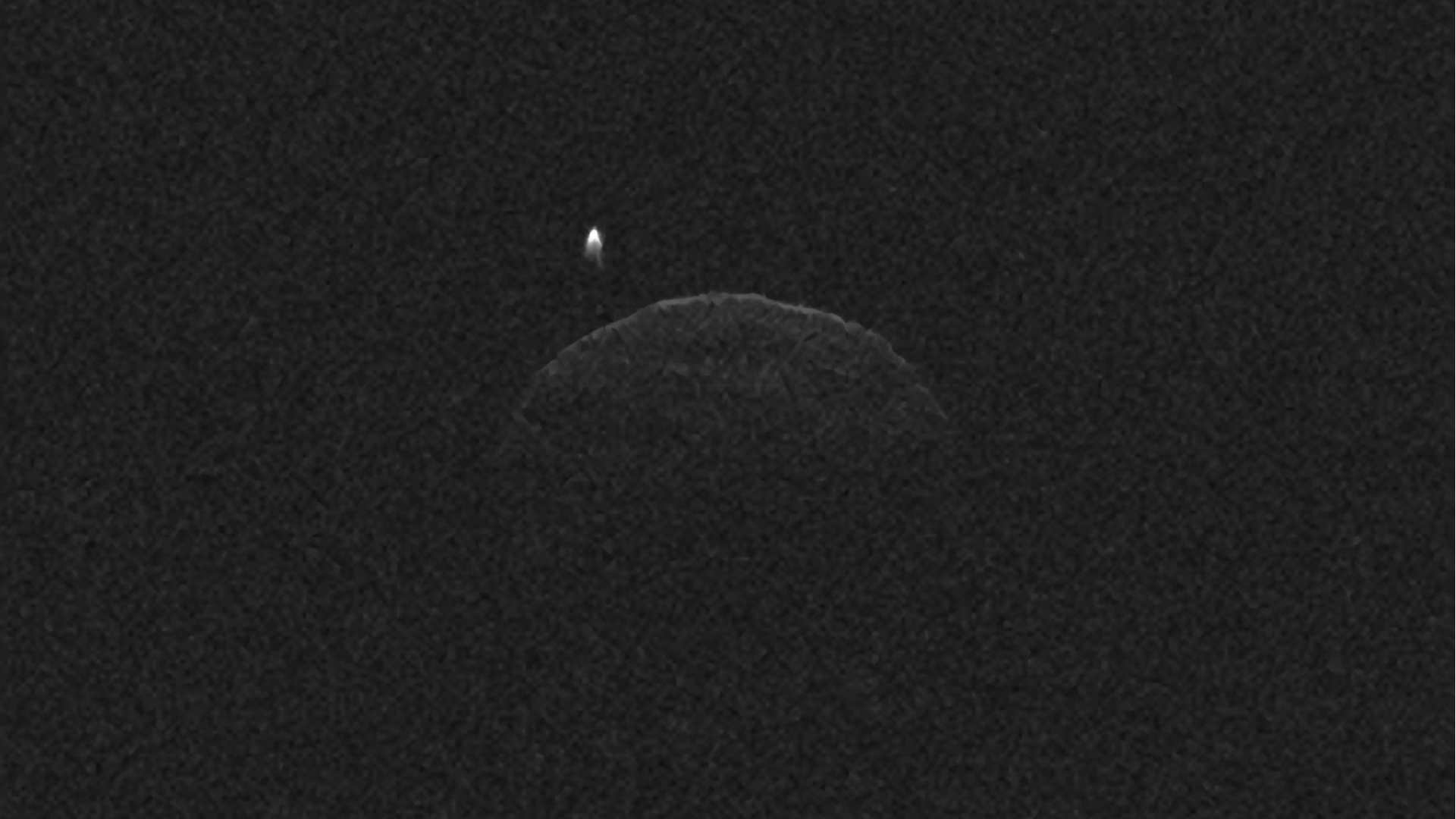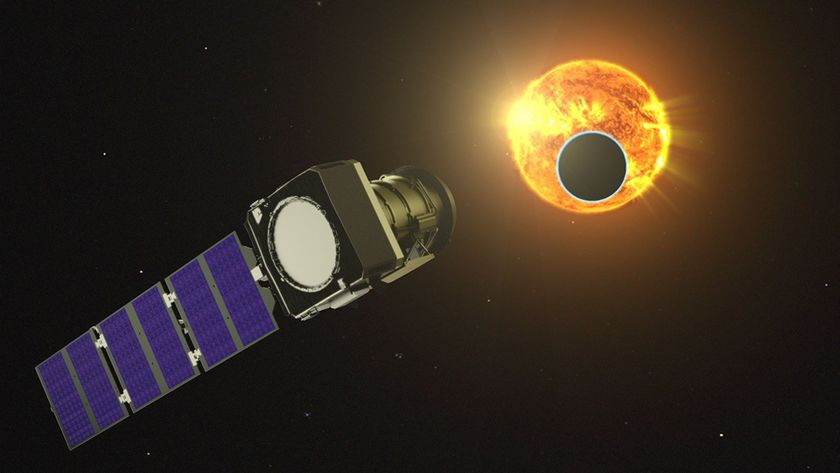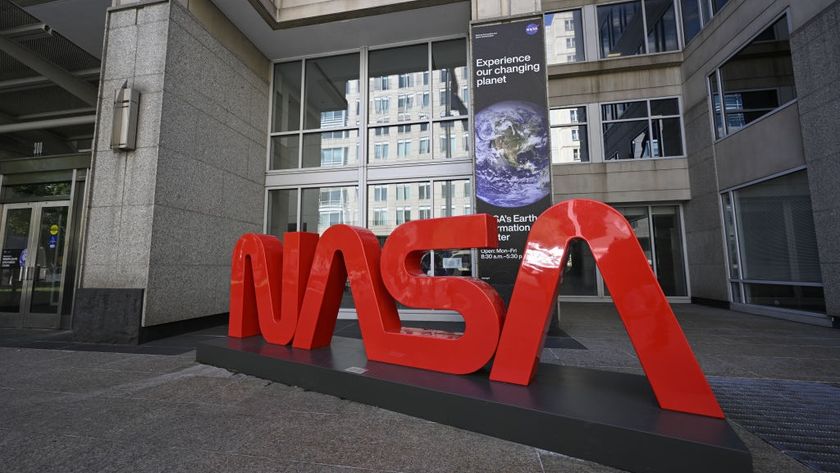
A newly released video of a giant asteroid's Earth flyby last week reveals key details about the enigmatic space rock and its attendant moon.
The enormous asteroid 1998 QE2 sailed past our planet at a distance of 3.6 million miles (5.8 million kilometers) on May 31, making its closest approach for at least the next two centuries.
Scientists have been tracking 1998 QE2 using two different radar instruments — NASA's 230-foot-wide (70 meters) Deep Space Network antenna at Goldstone, Calif., and the 1,000-foot (305 m) Arecibo Observatory in Puerto Rico. [Watch the new video of 1998 QE2's flyby]
The new video stitches together 55 images captured by the Goldstone facility on June 1, when the asteroid was about 3.75 million miles (6 million km) from Earth. Its resolution is about 125 feet (38 m) per pixel, researchers said.
Analysis of the Goldstone images has allowed scientists to refine their estimate of 1998 QE2's size, pegging the space rock's width at about 1.9 miles (3 km). The asteroid's moon, visible as a bright dot in the video, is about 2,000 feet (600 m) wide.
This moon completes one orbit every 32 hours, researchers said, and it apparently shows only one face to the larger body (just as Earth's moon always shows us its near side). The maximum distance between 1998 QE2 and its moon is about 4 miles (6.4 km).
Asteroid 1998 QE2 completes one rotation about its axis every five hours or so. It's one of the largest and slowest-spinning binary space rocks that radar instruments have ever observed, scientists said.
Get the Space.com Newsletter
Breaking space news, the latest updates on rocket launches, skywatching events and more!
Multi-asteroid systems like 1998 QE2 aren't terribly uncommon. About one of every six near-Earth asteroids at least 655 feet (200 m) wide is actually a binary or triple system.
Asteroid 1998 QE2 was discovered in August 1998 by astronomers working with MIT's Lincoln Near Earth Asteroid Research program in New Mexico. It's one of 10,000 or so close-flying asteroids that have been spotted to date, out of a total population that likely numbers at least 1 million.
There was never any danger of 1998 QE2 hitting Earth on last week's flyby, researchers said. That's a good thing, because a strike by such a large space rock would be catastrophic. Any asteroid more than 0.6 miles (1 km) wide is thought to be capable of inflicting damage on a global scale, primarily by altering the planet's climate.
Astronomers plan to continue studying 1998 QE2 with the Goldstone and Arecibo dishes until Sunday (June 9), NASA officials have said.
Follow Mike Wall on Twitter @michaeldwall and Google+. Follow us @Spacedotcom, Facebook or Google+. Originally published on SPACE.com.
Join our Space Forums to keep talking space on the latest missions, night sky and more! And if you have a news tip, correction or comment, let us know at: community@space.com.

Michael Wall is a Senior Space Writer with Space.com and joined the team in 2010. He primarily covers exoplanets, spaceflight and military space, but has been known to dabble in the space art beat. His book about the search for alien life, "Out There," was published on Nov. 13, 2018. Before becoming a science writer, Michael worked as a herpetologist and wildlife biologist. He has a Ph.D. in evolutionary biology from the University of Sydney, Australia, a bachelor's degree from the University of Arizona, and a graduate certificate in science writing from the University of California, Santa Cruz. To find out what his latest project is, you can follow Michael on Twitter.


